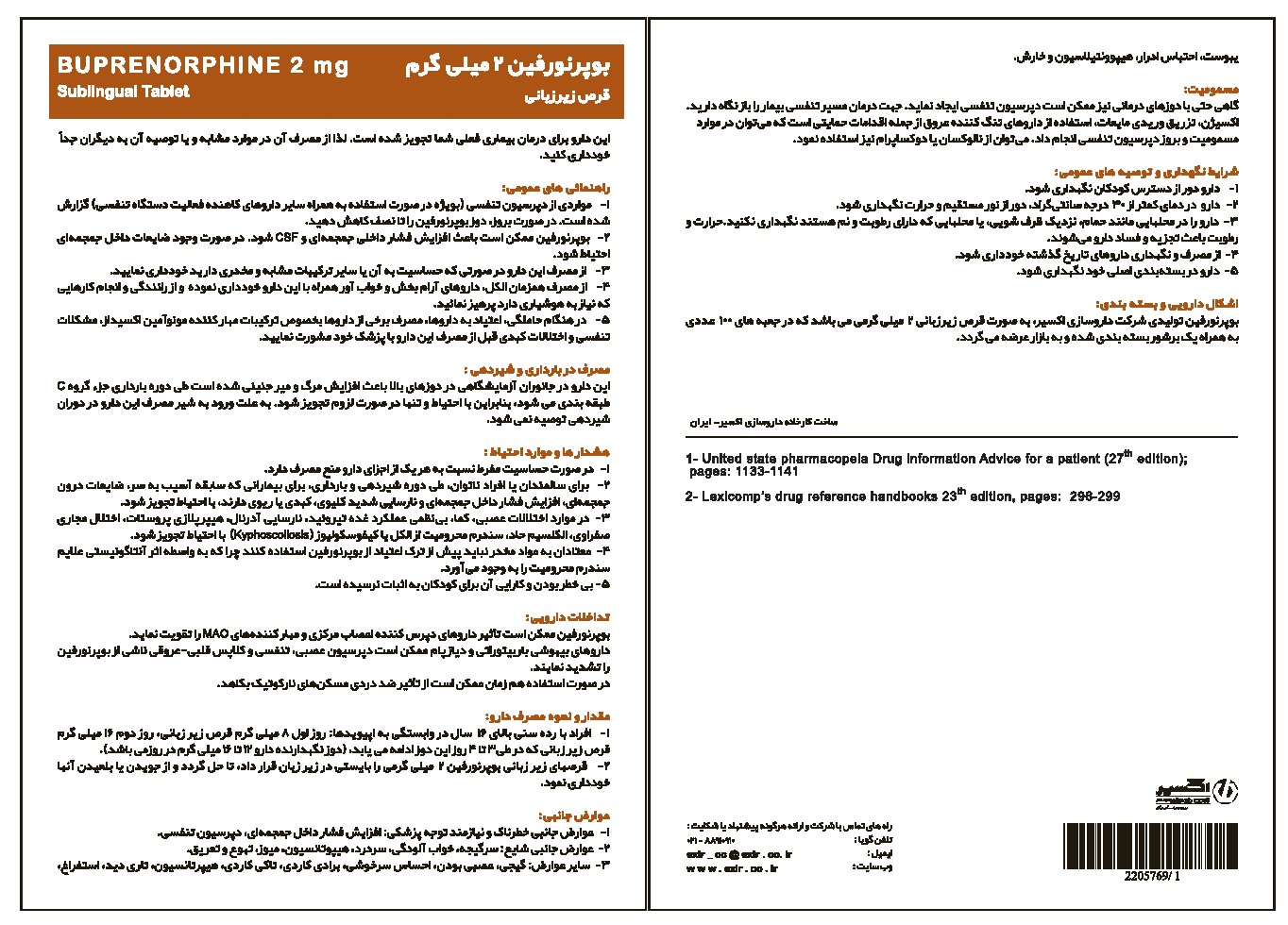BUPRENORPHINE 2mg
Sublingual tablet Buprenorphine 2 mg

| Generic Name of Product | Brand Name | Dosage Form | Strength | Pharmacologic Group | Therapeutic Group | Unit Per Pack |
| Buprenorphine | - | S.L. Tablet | 2 mg | Narcotic analgesics | Narcotics | 100 |
Indications And Usage | Buprenorphine Sublingual Tablets are indicated for the treatment of opioid dependence and are preferred for induction. Buprenorphine Sublingual Tablets should be used as part of a complete treatment plan to include counseling and psychosocial support. |
Administration | Buprenorphine Sublingual Tablets are administered sublingually as a single daily dose. The use of Buprenorphine Sublingual Tablets for unsupervised administration should be limited to those patients who cannot tolerate buprenorphine and naloxone sublingual film or buprenorphine and naloxone sublingual tablets; for example, those patients who have been shown to be hypersensitive to naloxone. |
Contraindications | Buprenorphine Sublingual Tablets are contraindicated in patients with a history of hypersensitivity to buprenorphine, as serious adverse reactions, including anaphylactic shock, have been reported . |
Precautions | Addiction, Abuse, and Misuse, Risk of Life-Threatening Respiratory and Central Nervous System (CNS) Depression, Managing Risks from Concomitant Use of Benzodiazepines or Other CNS Depressants, Unintentional Pediatric Exposure, Neonatal Opioid Withdrawal Syndrome, Adrenal Insufficiency, Risk of Opioid Withdrawal with Abrupt Discontinuation, Risk of Hepatitis, Hepatic Events, Hypersensitivity Reactions, Precipitation of Opioid Withdrawal Signs and Symptoms, Risk of Overdose in Opioid Naïve Patients, Use in Patients with Impaired Hepatic Function, Impairment of Ability to Drive or Operate Machinery, Orthostatic Hypotension, Elevation of Cerebrospinal Fluid Pressure, Elevation of Intracholedochal Pressure, Effects in Acute Abdominal Conditions |
Adverse Reactions | Addiction, Abuse, and Misuse, Respiratory and CNS Depression , Neonatal Opioid Withdrawal Syndrome, Adrenal Insufficiency, Opioid Withdrawal, Hepatitis, Hepatic Events, Hypersensitivity Reactions, Orthostatic Hypotension, Elevation of Cerebrospinal Fluid Pressure, Elevation of Intracholedochal Pressure |
Pregnancy and lactation | The data on use of buprenorphine, the active ingredient in Buprenorphine Sublingual Tablets, in pregnancy, are limited; however, these data do not indicate an increased risk of major malformations specifically due to buprenorphine exposure Based on two studies in 13 lactating women maintained on buprenorphine treatment, buprenorphine and its metabolite norbuprenorphine were present in low levels in human milk and available data have not shown adverse reactions in breastfed infants |
Renal and liver Impairment | Hepatic Impairment: For patients with severe hepatic impairment, a dose adjustment is recommended, and patients with moderate or severe hepatic impairment should be monitored for signs and symptoms of toxicity or overdose caused by increased levels of buprenorphine. Renal Impairment: No differences in buprenorphine pharmacokinetics were observed between 9 dialysis-dependent and 6 normal patients following IV administration of 0.3 mg buprenorphine. |
Laboratory Tests | Regular monitoring of liver function, respiratory and cardiac status of the patient is recommended, neonatal monitoring should be considered. |

